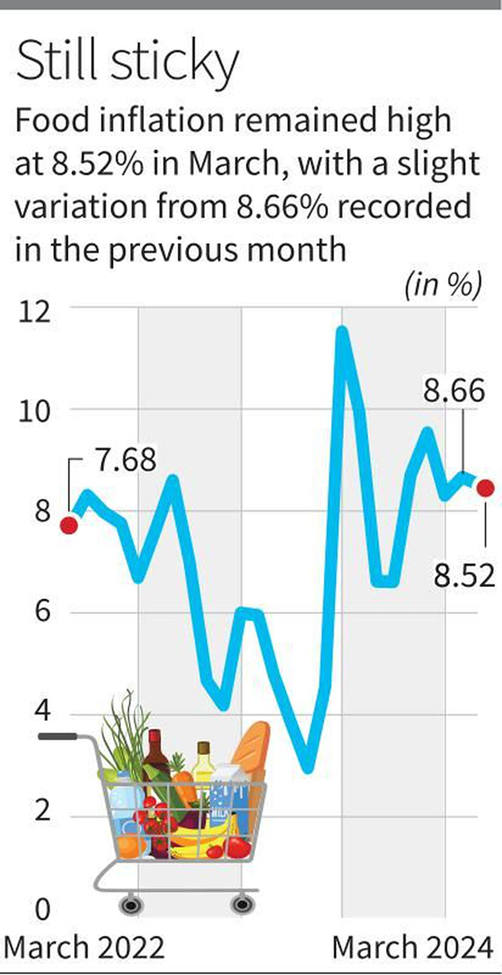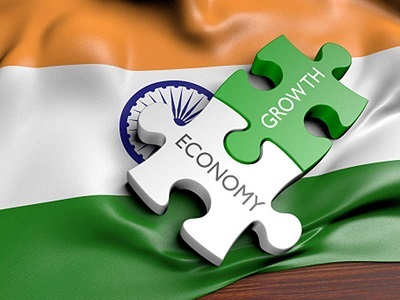Context:
The results of the just concluded general election may partly be interpreted as signaling a discontent with India's economic conditions, particularly in poorer, rural states like Uttar Pradesh. High unemployment, persistent food-price inflation, and declining real earnings have exacerbated public dissatisfaction. We need a shift in economic policy to address these issues.
Economic Discontent
- Persistent Food- Price Inflation
- Dissatisfaction with governance is high amidst unemployment and persistent inflation, especially food-price inflation which has remained elevated for five years. This inflation is highest for cereals and pulses, staples for households at the bottom of the income distribution. Historical trends suggest that high food prices can influence electoral outcomes. For instance, the end of a previous administration in 2004 followed historically high food-price inflation.
- Dissatisfaction with governance is high amidst unemployment and persistent inflation, especially food-price inflation which has remained elevated for five years. This inflation is highest for cereals and pulses, staples for households at the bottom of the income distribution. Historical trends suggest that high food prices can influence electoral outcomes. For instance, the end of a previous administration in 2004 followed historically high food-price inflation.
- Increasing Unemployment
- The unemployment rate has mostly been higher since 2014, and the Periodic Labour Force Survey indicates a decline in real earnings for regular employees and the self-employed, particularly significant for the latter. These factors contribute to the economic discontent that may have shifted votes away from the ruling party.
- The unemployment rate has mostly been higher since 2014, and the Periodic Labour Force Survey indicates a decline in real earnings for regular employees and the self-employed, particularly significant for the latter. These factors contribute to the economic discontent that may have shifted votes away from the ruling party.
Reevaluating Economic Reforms
- Honoring the Mandate
- In the spirit of democracy, the government must now address the sources of this discontent, which requires a shift from the economic approach of the last decade. However, there are no clear indications that the government plans such a shift. While the government has promised ‘reforms,’ the effectiveness of these reforms is debatable.
- Praised reforms have not translated into a higher average growth rate post-2014. Reforms effective in changing demand or supply forces have not significantly impacted the economy. Moreover, the growth seen since 2014 has not met the aspirations of Indians.
- High food inflation and the inability of 75% of the population to afford a healthy diet, as per the Food and Agriculture Organization of the United Nations, highlight the disparity. Indians aspire to improved physical and social infrastructure, including healthcare, education, transportation, and utilities essential for daily life and economic activity.
- In the spirit of democracy, the government must now address the sources of this discontent, which requires a shift from the economic approach of the last decade. However, there are no clear indications that the government plans such a shift. While the government has promised ‘reforms,’ the effectiveness of these reforms is debatable.
- Past Decade’s Economic Policy
- The economic policy of the past decade focused on attracting foreign investment, promoting digital payments, subsidizing manufacturing, and expanding highway construction. This approach, combined with welfare transfers like cash for farmers and housewives, and free rations for the poorest, appears insufficient to regain a majority for the ruling party. To continue this strategy would ignore the people’s verdict.
- The economic policy of the past decade focused on attracting foreign investment, promoting digital payments, subsidizing manufacturing, and expanding highway construction. This approach, combined with welfare transfers like cash for farmers and housewives, and free rations for the poorest, appears insufficient to regain a majority for the ruling party. To continue this strategy would ignore the people’s verdict.

Addressing Specific Pressure Points
- Rising Food Prices : The relentless rise in staple food prices indicates an under-developed economy. Wheat production fluctuates, but pulse production has chronically fallen short of demand for decades. Achieving self-sufficiency in pulses must become a mission. The supply of fruits and vegetables is hindered by inadequate cold-storage facilities and poor transportation.
- Indian Railways : The Indian Railways has struggled with the rise in long-distance migration for work. Overcrowded reserved compartments highlight this issue. Prioritizing high-end trains over improving basic services is a serious misjudgment.
- Water Supply in Mega Cities : Water shortages in cities like Bengaluru and Delhi threaten their economic potential and social harmony. Addressing water supply issues is crucial for these leading agglomerations.
- Beyond Vague Pronouncements : Simply doubling down on welfare transfers or showcasing macroeconomic stability will not suffice. Fiscal consolidation had been somewhat successful pre-COVID-19, but inflation control lagged, and growth was declining even before the pandemic. Sustained high growth requires an increased investment rate, driven by anticipated demand. The private investment rate has stagnated for a decade.
- The Role of the Public Sector: The public sector is crucial for providing the necessary infrastructure for daily life and economic activity. High growth in India over the past quarter century has not sufficiently delivered these services, which the private sector is unlikely to supply in a timely manner. The government must take the lead.
A Call for Course Correction
- Rising Food Prices : To address food-price inflation, the government must take steps to enhance agricultural productivity and efficiency. Promoting the cultivation of pulses and other staple crops can help mitigate shortages and stabilize prices. Additionally, investments in cold-storage facilities and efficient transportation networks will reduce food waste and ensure a steady supply of fruits and vegetables.
- Indian Railways : Improving the Indian Railways' capacity and efficiency is essential to accommodate the rising demand for long-distance travel. Prioritizing basic services and expanding the rail network to underserved areas will facilitate economic migration and reduce overcrowding. Investing in modernizing existing infrastructure, rather than focusing solely on high-end projects, will have a broader impact on the population.
- Water Supply in Mega Cities : Addressing water shortages in major cities requires a multi-faceted approach. Investments in water infrastructure, including reservoirs, pipelines, and treatment facilities, are crucial. Implementing efficient water management practices and promoting conservation efforts will help ensure a sustainable water supply for urban areas.
Conclusion
Continuing the economic policies of the past decade ignores the electorate's discontent. The government must prioritize addressing immediate issues such as food prices, infrastructure deficiencies, and public services. Focusing on these critical areas and enhancing infrastructure will honor the mandate, promoting sustainable growth and development. Shifting from vague reform promises to concrete actions will better meet the population's needs and aspirations, fostering a more resilient and equitable economic future. Instead of more liberalizing reforms, the government should address clear pressure points to advance towards the goal of becoming a developed economy by 2047, ensuring infrastructure supports both life and economic activity.
|
Probable Questions for UPSC Mains Exam-
|
Source- The Hindu







